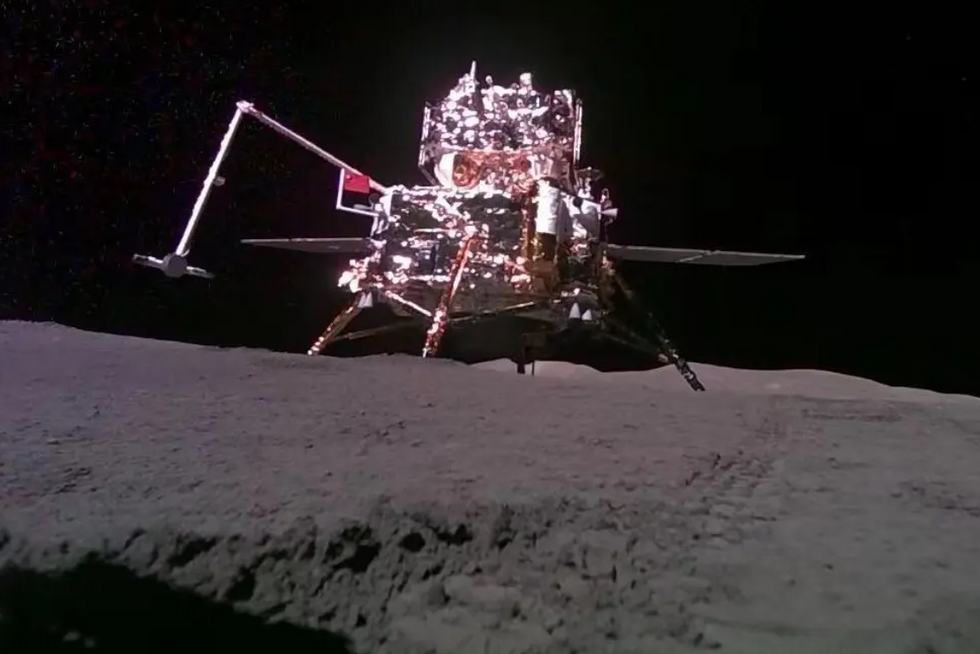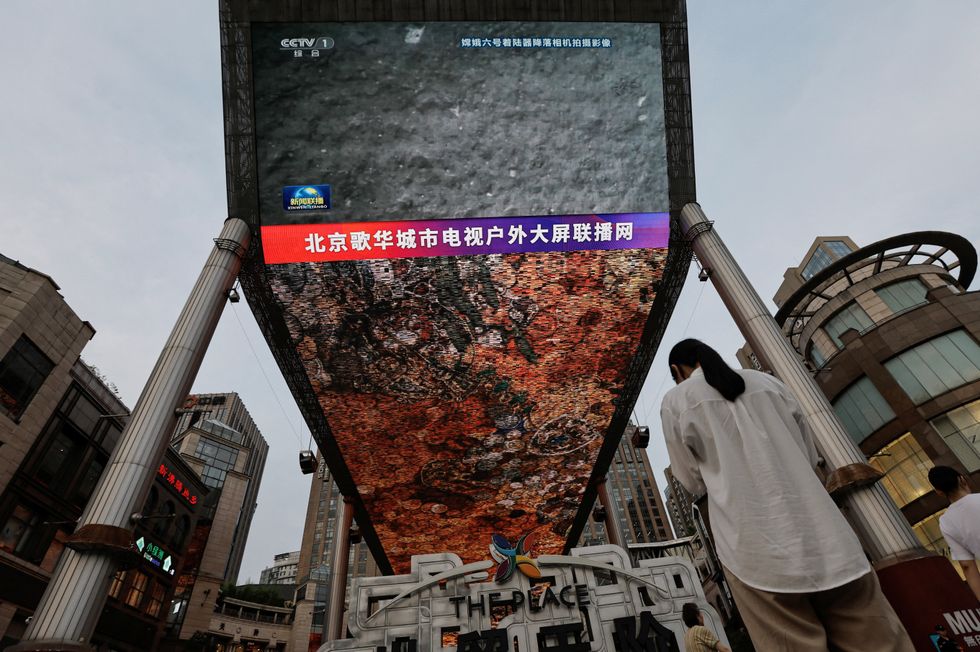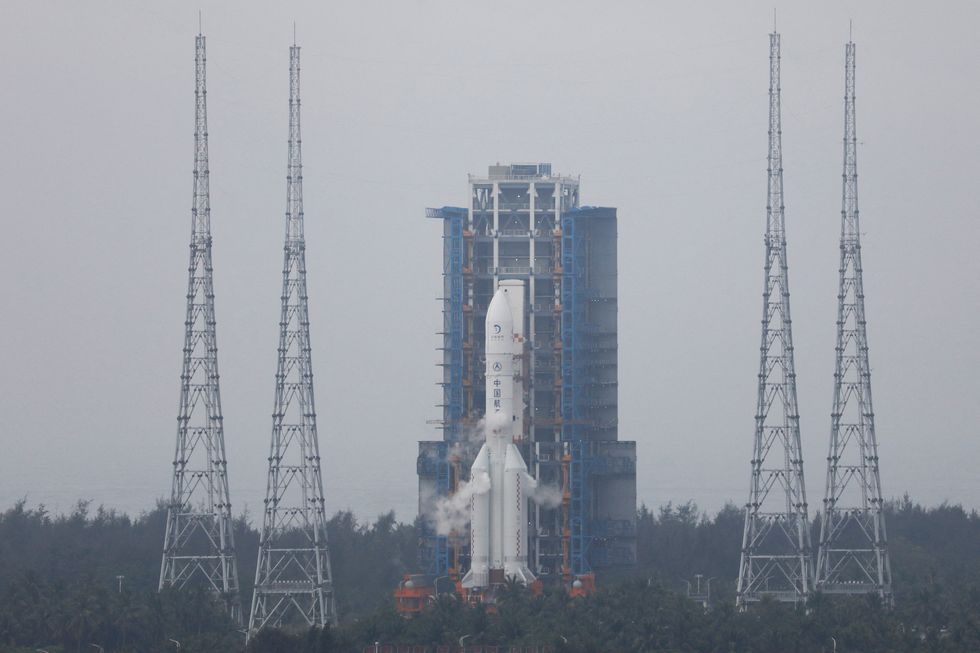China space probe returns to Earth with first EVER samples from the Moon's unexplored far side

China’s lunar probe has returned to earth with samples from the Moon's unexplored side
|China National Space Administration

Samples from the Chang’e-6 could answer crucial question on how planets are formed
Don't Miss
Most Read
China’s lunar probe has returned to Earth with the first ever samples from the Moon’s far side.
The probe landed within one of the oldest craters on the lunar surface on Sunday, then spent two days gathering rock and soil samples using its robotic drill arm.
Scientists are eagerly awaiting the analysis of the samples which could provide key information about how planets are formed.
The moon's far side is challenging to reach due to both its distance, and its tough terrain consisting of giant clusters with few flat surfaces to land.
 China’s lunar probe has returned to earth with samples from the Moon's unexplored side | China National Space Administration
China’s lunar probe has returned to earth with samples from the Moon's unexplored side | China National Space Administration After successfully gathering its samples with a robotic arm, "a Chinese national flag carried by the lander was unfurled for the first time on the far side of the moon", the China National Space Administration (CNSA) said.
The probe blasted off from a space centre last month, before successfully landing on the moon's south pole a few weeks later.
"This is a very important achievement," said Professor Martin Barstow of the University of Leicester.
"Only the USA and Russia have recovered samples from the moon, landing and then taking off again. It demonstrates an impressive capability in China’s space programme. It’s a technical feat to take off from the moon at all but even more challenging when carried out on its far side."
SPACE LATEST:

A large screen shows news footage of the lunar surface taken with the landing camera on the lander of Chang'e-6 lunar probe, during an evening news broadcast in Beijing
|Reuters
Experts say the samples brought back could provide insights into the formation and evolution of the moon and the solar system, as well as provide hints as to how the Earth first managed to sustain life.
“I do not know if they have any plans for sharing samples outside China, but I hope they have and that we in the UK would get an opportunity to work on these. This would fit very well with our plans for sample return from Mars,” said Barstow.
Today's landing marks a significant milestone in China's ambitious space programme - which is banned from operating with Nasa assistance by US law.
Pierre-Yves Meslin, a French researcher working on the mission, said: "It is a bit of a mystery to us how China has been able to develop such an ambitious and successful programme in such a short time."

The launch of the probe early last month
|Reuters
Chang'e-6 is part of a long-term project to build a permanent research station on the moon - the joint Chinese and Russian International Lunar Research Station (ILRS).
Wu Weiren, chief designer of the Chinese Lunar Exploration Project, said last month that a "basic model" of the ILRS would be in place by 2035.
Western countries have been keen to get involved in the project, and France, Italy, Pakistan, and the European Space Agency, all have moon-studying payloads aboard Chang'e-6.
James Carpenter, head of the European Space Agency (ESA)'s lunar science office, said: "We know that the moon may have resources that could become useful in the future, so the European Space Agency, Nasa, the Chinese agency and others around the world are going to the moon.
"Part of the rationale is to understand those resources".










